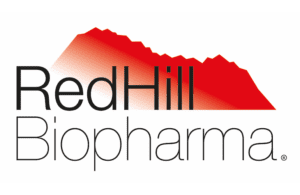
The specialty biopharmaceutical company Redhill Biopharma (NSDQ:RDHL) recently announced that the first patient had been dosed in a Phase 2/3 investigating the potential of RHB-107 (upamostat) for mild-to-moderate COVID-19.
The company is also testing the potential of a drug known as opaganib for hospitalized patients.
In the following interview, Gilead Raday, COO at Redhill Biopharma, sheds light on its potential COVID-19 therapies and provides an update on RHB-204, a promising candidate for pulmonary nontuberculous mycobacteria (NTM) disease.
Drug Discovery: Could you give us a brief background on RedHill Biopharma?

Gilead Raday
Raday: RedHill was founded in 2009. We’re focused on developing and commercializing drugs for GI diseases and infectious diseases.
We have a commercial footprint in the U.S. with three products: Movantik, Talicia and Aemcolo. Those are primarily GI-focused with some infectious aspects to them. We have a broad pipeline of drugs focusing on infectious diseases, GI and some COVID-19 programs.
Drug Discovery: What led to the founding of the company?
Raday: RedHill was founded during the previous economic crisis. We brought in undervalued products and assembled a team that could close deals with companies that have trouble advancing the products.
Our competence is built around two main aspects. One is closing deals globally and partnering with pharmaceutical companies and licensors on products with a lot of potential value.
Two, there’s the focus on organic development in-house. And we’ve shown that with the full cycle development of Talicia, getting it all through the FDA clinical development and NDA approval for treating H. pylori infection, for example.
We have continued doing deals at various stages with the companies, both in development stages and commercial stages. We purchased Movantik (naloxegol) from AstraZeneca, for instance, in 2020.
Drug Discovery: What can you share about upamostat as a potential COVID-19 therapy?
Raday: Upamostat is a serine protease inhibitor that targets the enzymes that cleave to the spike protein and enable the virus to attach to human cells. So by inhibiting that, we could help prevent that attachment.
This product was developed as a cancer therapy. But it is a serine protease inhibitor that has potential in inflammatory and viral indications.
For COVID-19, we’re launching a Phase 2/3 trial to test its impact on viral replication and viral infection of cells in patients with mild-to-moderate disease.
Drug Discovery: Could you share more about opaganib as well as a potential COVID-19 treatment?
Raday: Opaganib is an interesting compound. It’s a new chemical entity licensed originally from a U.S. lab spin-off in Pennsylvania. They developed it for an oncology indication primarily.
Opaganib is a sphingosine kinase-2 inhibitor, which is a multifunctional enzyme. It has an impact on apoptosis or proliferation of cells, which is relevant for the oncology indication. But it also has an impact on inflammation and viral replication.
We had completed some work with NIH previously testing opaganib against Ebola when Ebola was endemic.
When COVID emerged, we were ready with the mechanism of action of opaganib and the understanding of its potential antiviral and anti-inflammatory mechanisms to take it forward and try to develop it for COVID-19.
And indeed, the benefits of this approach are now becoming even more apparent. The target that we’re looking at isn’t affected by mutations of the spike protein on the virus.
The different mutations affect the virus that may overcome direct antibodies targeting the spike, but we are going further downstream to inhibit viral replication. It is thus not affected by the mutation. Opaganib’s potential to be active against all the different SARS-CoV-2 variants could be a distinguishing factor.
And another important distinguishing factor is the fact opaganib is oral. It’s easy to distribute and administer it. We can foresee its use in outpatient settings in mild cases of COVID-19 in the future and the more severe hospitalized cases. IV products are much harder to administer and distribute to patients outside of hospitals.
Drug Discovery: RedHill received Fast Track designation from FDA for RHB-204, an oral treatment of pulmonary nontuberculous mycobacteria (NTM) disease. Can you share more about that?
Raday: We have a Phase 3 study that we’re initiating related to NTM disease, which is often a debilitating disease. Approximately 100,000 to 110,000 people in the U.S. contract it annually. It’s primarily caused by infection with Mycobacterium avium complex (MAC) bacteria, but other mycobacteria can also cause the disease. And it’s primarily a pulmonary disease, although it can also be in other organs in the body.
We’re all exposed to mycobacteria in soil and water. For the most part, our immune systems can cope with it. But the bacteria can pose a risk for some older and immunocompromised patients.
There’s no FDA-approved therapy for it.
We have three designations for RHB-204, reflecting the unmet medical need and the urgency that health authorities attribute to developing therapies for NTM. We have an Orphan Drug Designation, a Qualified Infectious Disease Product Designation and a Fast Track Designation.
We also have patent protection on RHB-204 until 2029 and up to 2041. It’s a first-line therapy for NTM disease. It is a unique proprietary formulation of three actives in combination.
When treating this type of mycobacterial infection, there is a risk of developing antibiotic resistance. Our formulation with three actives at the appropriate doses can prevent resistance.
Drug Discovery: How did RedHill develop the formulation of the three antibiotics — clarithromycin, rifabutin, and clofazimine?
Raday: We originally licensed the combination from an Australian researcher treating mycobacterial infection in Crohn’s and other gastrointestinal diseases. Crohn’s disease is a different indication, but a similar triggering pathogen is involved. There was a successful Phase 3 study for the Crohn’s [indication].
We looked for additional indications where we could use this combination. NTM became the most interesting indication with the highest unmet need. We adjusted the doses of the combination and created a new formulation with unique doses that are ideal in terms of the efficacy and safety tolerability for the NTM patients. We completed preclinical evaluation in the relevant models for NTM disease, both in animals and in vitro, to firm up this contribution of components and the specific doses. We also did some modeling to ensure that the dosing we’re selecting is ideal for safety and efficacy. We’re now in the Phase 3 study based on that.